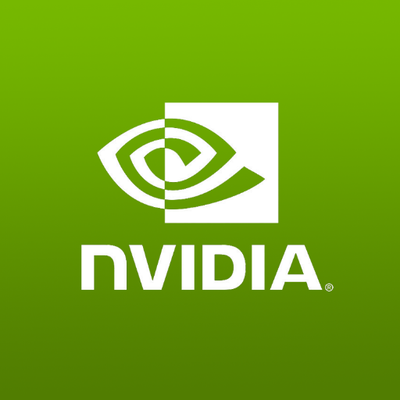
NVIDIA Behavioral Interview Template — AI Engineer (Engineering, 10k+ employees)
Purpose: Evaluate end-to-end ownership, cross-functional collaboration, speed with rigor, intellectual honesty, and customer impact expected of AI Engineers at NVIDIA. What this interview covers at NVIDIA: - Ownership at scale: Driving AI features/models from problem framing to deployment, with measurable impact (latency/throughput/accuracy/cost) and post-launch iteration. - Cross-stack collaboration: Partnering with research, systems/infra, product, and (when relevant) CUDA/TensorRT/Triton/platform teams; influencing without authority. - Speed and bar for excellence: Operating with urgency (“move at the speed of light”) while maintaining reproducibility, safety, and code quality. - Intellectual honesty: Admitting unknowns, changing course based on data, clear trade-off communication, and learning agility. - Customer/partner focus: Translating enterprise/partner needs into practical AI solutions; balancing performance, cost, and maintainability. - Responsible AI and data stewardship: Privacy, bias, compliance, and secure handling of datasets and models. Agenda (60 minutes): - 0–5 min | Warm-up and context: Interviewer intro, role/team context, candidate’s 60-second background. Set expectation for deep dives and specifics (metrics, decisions, trade-offs). - 5–15 min | Ownership and impact under ambiguity: Explore a project where scope was unclear or goals shifted under deadline pressure (e.g., major release or conference demo). Probe decisions, prioritization, and risk management. - 15–25 min | Cross-functional influence: Discuss partnering with research/product/infra or external stakeholders. Assess conflict resolution, stakeholder mapping, and how the candidate earns trust quickly. - 25–35 min | Speed with rigor: Walk through an instance of delivering fast without sacrificing quality. Look for experiment design, documentation, testability, rollback plans, and measurable results. - 35–45 min | Intellectual honesty and learning: Times they changed their mind due to evidence, owned mistakes, or reversed a decision; how they upskilled (e.g., CUDA/TensorRT/Triton, distributed training) to unblock the team. - 45–55 min | Customer/partner focus and responsible AI: How they translated requirements into deployable solutions; handling data privacy, bias, or model safety concerns; managing go/no-go decisions. - 55–60 min | Candidate questions and close: Gauge curiosity (roadmap, performance trade-offs, users), align next steps. Behavioral focus areas with prompts and evidence: 1) Ownership and Impact - Prompts: "Tell me about a time you owned an AI system end-to-end." "What did you de-scope and why?" "How did you quantify success (latency, throughput, accuracy, cost)?" - Evidence: Clear objective function, baselines, metric movement with numbers; crisp trade-offs; postmortems and iteration. 2) Cross-Functional Collaboration - Prompts: "Describe a conflict with research or platform teams and how you resolved it." "How did you influence priorities without authority?" - Evidence: Structured stakeholder communication, RFCs/design docs, meeting the other side’s constraints (e.g., memory budget, kernel launch overhead, SLA). 3) Speed with Rigor - Prompts: "When did you deliver under a hard deadline and still keep quality high?" "How did you prevent regressions?" - Evidence: Experiment plan, reproducibility, rollback/feature flags, monitoring, A/B or canary results, on-call readiness. 4) Intellectual Honesty - Prompts: "What’s a belief you reversed due to data?" "A mistake you owned—impact and fix?" "What don’t you know today that you must learn for this role?" - Evidence: Specific data leading to decision changes; precise acknowledgement of limits; concrete learning plan. 5) Customer/Partner Orientation - Prompts: "How did you translate ambiguous partner asks into a shippable MVP?" "Give an example of balancing accuracy vs. latency vs. cost." - Evidence: Empathy for users, prioritization framework, measurable outcomes, post-launch adoption. 6) Responsible AI and Data Stewardship - Prompts: "Describe a time you addressed bias, privacy, or safety concerns." "What guardrails and documentation did you add?" - Evidence: Data governance, evaluation beyond top-line metrics, auditability, clear communication of limitations. Role-specific nuance for NVIDIA AI Engineers: - Expect discussion around performance engineering and deployment (e.g., model optimization, batching/quantization, memory footprint), collaboration with platform/infra, and communicating trade-offs to non-experts. Sample questions (behavior-first, NVIDIA-tailored): - "Walk me through a high-impact AI deliverable where you owned both research translation and productionization. What were the exact metrics before/after?" - "Describe a time you had to choose between a research-accurate model and one that met production latency/cost targets. How did you decide?" - "Tell me about a tough cross-team disagreement (e.g., research vs. platform). How did you approach influence and resolution?" - "When did you realize your original approach was wrong? What data changed your mind and how did you communicate the pivot?" - "Give an example of delivering under a high-visibility deadline. What did you automate, what did you defer, and why?" - "How have you handled responsible AI concerns—privacy, bias, safety—in a shipped feature?" Evaluation rubric (1–5, calibrated to NVIDIA standards): - 1: Vague stories, no metrics, blames others, limited collaboration. - 2: Some specifics but weak metrics/trade-offs; slow to acknowledge mistakes; minimal user focus. - 3: Solid, metric-backed examples; basic cross-team influence; acceptable speed with adequate quality. - 4: Repeated, quantified impact; strong influence without authority; fast and rigorous; proactively addresses responsible AI. - 5: Exceptional, systemic impact; mentors others; changes org-level outcomes; consistently exhibits intellectual honesty and customer obsession under pressure. Red flags: - Hand-wavy results (no baselines/metrics), inability to quantify performance gains. - "Brilliant jerk" behaviors; dismissive of partner constraints or user needs. - Over-indexing on speed without safeguards; ignores privacy/bias/safety. - Cannot describe failures or learning; deflects ownership. Interviewer guidance: - Ask for numbers, artifacts (design docs, dashboards), and precise trade-offs. - Use at least two follow-up probes per story (why, how, result, reflection). - Calibrate depth over breadth; prefer one or two end-to-end deep dives. - Reserve compensation/process details for recruiting; focus this session on behaviors and impact.
8 minutes
Practice with our AI-powered interview system to improve your skills.
About This Interview
Interview Type
BEHAVIOURAL
Difficulty Level
4/5
Interview Tips
• Research the company thoroughly
• Practice common questions
• Prepare your STAR method responses
• Dress appropriately for the role